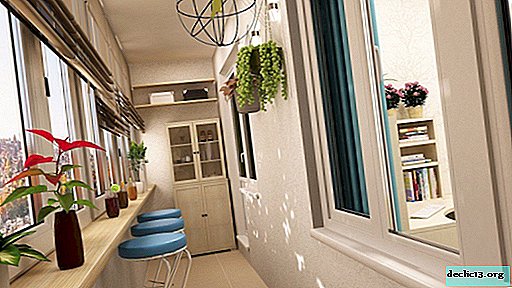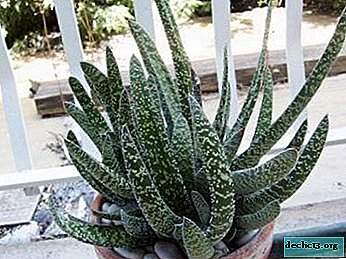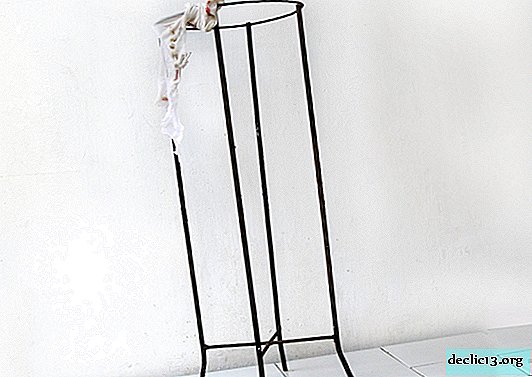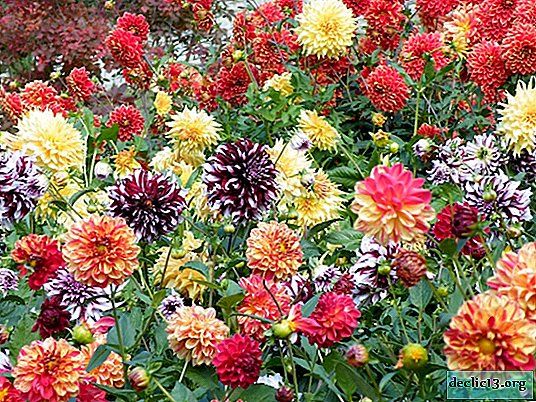A miracle of nature - lithops or "living stones". Rules of care and photo of the flower
 To grow lithops on your own, you need to know some feature of his life: in the Southern Hemisphere, changes in seasons are opposite to Russian ones.
To grow lithops on your own, you need to know some feature of his life: in the Southern Hemisphere, changes in seasons are opposite to Russian ones.
And although several generations of lithops have been growing in the northern latitudes, they still remember the biorhythm of the south.
In our material you will find what it is, what kind of succulents they belong to, whether it is possible to keep this plant at home, what flower care should be like at home.
What it is?
Lithops (Greek λίθος, "stone" + Greek. Όψις, "appearance", Lithops) belongs to the genus Succulents from the family Aizov, grows in South Africa. Many attribute lithops to a cactus, but this is a mistake. Lithops has more than 30 varieties. The upper part of the plant is two thick leaves, separated by a not very deep gap, from which a fragrant white or yellow flower and new leaves grow.
Reference. Usually, the size of the succulent does not exceed 5 cm both in width and in height; lithops blooms, usually from August to November.In nature, lithops can be found in places where there are no living conditions for other plants, because it can survive a sharp jump in temperature and a long absence of moisture.
A unique plant can easily be confused with ordinary stones: it is small, rounded and with the color of the soil on which it grows - that’s why lithops are called “living stones”.
On what soil lithops grows on, its color depends on: gray, green, brown and even purple. Fleshy leaves can be convex or flat, with spots or patterns. Most types of lithops are long-lived plants, with age forming groups of 10-20 individual heads. Following the simple rules of care, "living stones" can be admired for many, many years.
Lithops contain toxic substances and are dangerous for babiestasting everything.
Plant species and their photos
Consider the most popular types of lithops, as well as get acquainted with the photo of the flower.
Beautiful (Bella)
A medium-tall plant with brownish-yellow leaves and white, slightly fragrant flowers.

Aucampiae
It has small roundish leaves of green, brown or blue hue with spots, with a deep gap between the leaves and a fluffy flower of bright yellow color.

Optics (Optica)
It differs in a very different color of tall and rounded leaves: from greenish gray to raspberry, with a deep fracture between the leaves and small white flowers similar to daisies.

Olive Green (Olivaceae)
it resembles dandelions with its ruffled yellow flowers with round and tall olive leaves and a pattern of white strokes and dots.

Lesliei
It looks like grayish pebbles with its small fleshy leaves. gray, blue-gray or brown with a mottled pattern and pleasantly smelling yellow flowers.

Growing
At home
Basic conditions:
- window on the south side;
- stony soil, freely passing water;
- sparse watering and regular ventilation.
Lithops can be grown using seeds that are best stored in the fruit of the plant, but gently free them from the husk before sowing.
On a note. Crockery for sowing should be more than 10 cm in height, because in natural conditions the roots grow to a greater depth.- The pot needs to be filled with a seed substrate and the top layer compacted, spreading the seeds over the surface, then moisten with boiled water and cover with glass or transparent plastic for several days.
- Sowing must be sprayed so that the surface does not dry out before seed germination begins.
- After 2 weeks, when the seeds sprout, place the pot in conditions close to the contents of adult plants.
It is better to plant lithops in one pot along with other succulentswhich, in case of accidental excess watering, take a significant part of the moisture from the pot.
If the roots quickly fill the container, it is necessary to transplant without disturbing the root system. In the first year after transplanting, there are enough nutrients in the soil, and the plant is not fertilized. In subsequent years, lithops can be fed once a month from June to September.
With the onset of growth during the dormant period, the plant must be treated with protective agents to protect it from the vermin.
We talked in more detail about how to grow lithops from seeds at home in a separate article.
In the open ground
 Basic conditions:
Basic conditions:
- Bad soil
- sparse watering;
- good lighting.
You can plant lithops in any soil: from sandy to nutritiousbut the best thing is a bad soil that passes moisture and air well, for example, deciduous land with sand, broken brick or pebbles.
Seeds will sprout well if they are sown in the middle of summer in a well-ventilated greenhouse, and with artificial lighting you can sow at any time of the year.
Important! Lithops can withstand high temperatures in fresh but dry air, otherwise they can either rot or dry out.Vital activity of the plant: winter is the dormant period, spring is the replacement of leaves. In winter and early spring, lithops need a cool and dry place with a temperature of 8-12 ° C. With the appearance of signs of growth or the formation of buds, which means the end of the dormant period, gradually resume watering without removing dried leaves.
Flower care
In sunny deserts - the native habitats of lithops - shade is quite rare, so they need bright sunshine throughout the year and regular airing. It is not necessary to unfold the pot from the light source, since orientation by the sun is extremely important for the appearance of buds.
Succulent tolerates sharp changes in temperature: from 25 ° C in summer to 12 ° C during dormancy.
Lithops should be watered during the growth period once every 2 weeks, and during dormancy, do not water at all, as when buds appear. Plants perfectly tolerate dry air and do not need spraying.
The nuances of caring for lithops at home and outdoors can be found here.
"Living pebbles" is a real miracle of nature, bewitching with its unusualness and unpretentiousness. Refined plants with an indescribable atmosphere will decorate and add style to the interior with a minimum of effort. And the plants, the care and maintenance of which was correct, will please with an unusual phenomenon - the flowering of "living stones".
Useful video
From the video you will learn the secrets of caring and growing lithops at home:

















